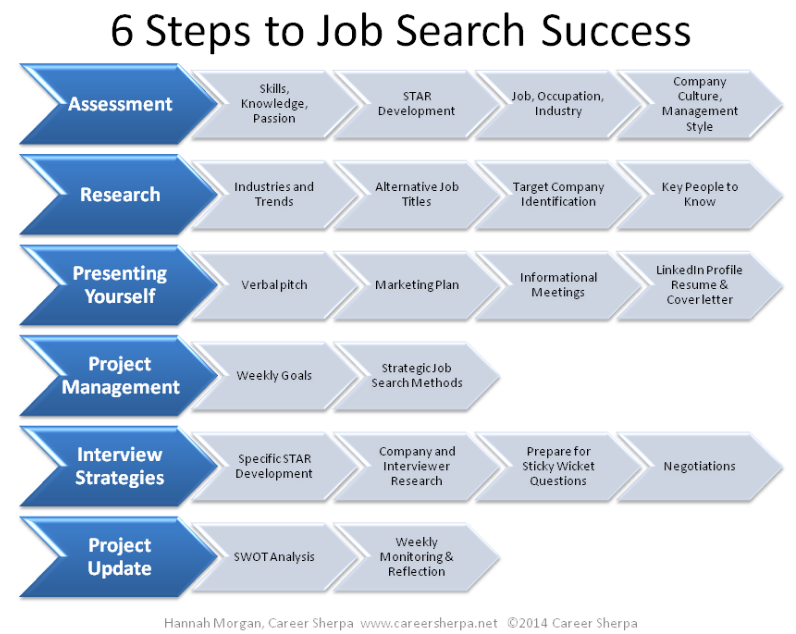When I’m on the road speaking at job clubs I talk about lot about being purposeful and strategic. For example, “make sure your personal branding is purposeful,” and “to have a strategic job search…” I want you to apply the ideas of purposeful and strategic as you work to create a job search strategy that works for you.

Below is the image I glanced over. I saw it as just one more infographic that had too much information… but I was mistaken. Yesterday I spent time going through it and realized this is an excellent six step model to create a strategic job search strategy! Now, when people ask “How do I create a job search strategy?” I can point them to this image. It is brilliant. You might think it’s simple, common sense, or obvious but I think it’s brilliant.
The reason this model is in her post is because it should frame, or put into context, all of the tools. Instead of just another list of a whole bunch of job sites, Hannah put sites in here that fill a purpose… each site should address at least one box or section in this strategy:
Create a Job Search Strategy in 6 Steps
I want to break down each of these, but for now let’s talk about her six steps which indeed help you create a job search strategy:
Assessment: Who are you? What do you have to offer? What should your brand messaging be? Preliminary thinking on companies and industries… this stage is fundamental (I skipped over it in my job search, which might be a big reason why I failed to find a job).
Research: The last stage was an exercise in introspection and honesty, this stage is will take you through Google, LinkedIn, Glassdoor, and more. Here we are looking for evidence, reported facts, etc.
Presenting Yourself: By this stage, you have thought about you, and what good matches would be… now it’s time to figure out how to position yourself. Up to this point, we have done things that most job seekers do mentally (and erroneously) in about three minutes.
Project Management: It’s go-time. This is what most people think a job search looks like.
Interview Strategies: This whole step will help you own the interview. That doesn’t mean you take it over. You’ll win some and lose some, and you’ll figure out that you don’t want to work at some companies, or for some people (because of the work you did in the first two steps).
Project Update: I don’t know what Hannah has in mind here, but this could apply to an active job search as well after you land… a weekly check-up to proactively manage your career (which will help you be prepared for your next job search).
I love these six steps. You might have some tweaking to do for yourself, but at least you have a great template to work from to create a job search strategy that works for you.
Like I said, I skipped most of the foundational steps and went straight to job search action. Don’t make that same mistake.
I have seen many people land their jobs and ignore the check-ins after… don’t make that mistake!


Hi Jason!
Thanks for sharing and explaining!
Like any project, job search involves planning, implementing and evaluating.
The project update section is the evaluating. Is what you are doing working? A SWOT-type analysis will help a job seeker assess where they need to focus more attention. And reflecting on what activities netted the best results helps a job seeker hone in on the more effective/productive activities!
Thanks again!
Yes! Another wise and thoughtful piece of career advice. Thank you, Hannah.